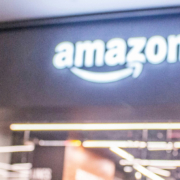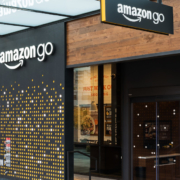RFID vs. Computer Vision: The Battle for the Future of Cashierless Retail
Retail technology is evolving at a rapid pace, with retailers increasingly seeking ways to create frictionless, cashierless shopping experiences. At the forefront of this transformation are two competing technologies: Radio Frequency Identification (RFID) and Computer Vision. Each has its strengths and challenges, making them suitable for different retail environments.
While RFID has been widely adopted for inventory management and fast checkout, Computer Vision is leading the way in fully autonomous stores. But which is the future of cashierless retail? And could a hybrid approach be the best solution? This article breaks down the key differences, real-world case studies, and the potential future of automated retail.
Understanding RFID in Retail
Radio Frequency Identification (RFID) uses electromagnetic fields to transmit data between RFID tags and readers. Unlike barcodes, RFID allows multiple items to be scanned simultaneously, making it an efficient solution for inventory management and checkout processes.
Advantages of RFID:
- Faster Checkout: Unlike barcode scanning, RFID enables bulk scanning of products at once, significantly reducing checkout time.
- Accurate Inventory Tracking: Retailers can monitor stock levels in real time, reducing losses due to theft and misplacement.
- Improved Supply Chain Efficiency: RFID allows automated restocking and tracking across multiple locations, reducing logistics errors.
Challenges of RFID:
- High Initial Costs: Implementing RFID requires investment in tags, readers, and infrastructure, making it less accessible for small businesses.
- Interference Issues: Certain materials, such as metal and liquids, can interfere with RFID signals, limiting its effectiveness for some product categories.
Computer Vision: The Future of Checkout-Free Retail?
Computer Vision utilizes AI-powered cameras and deep learning algorithms to recognize products, track customer movements, and process transactions without requiring physical tags or barcodes.
Advantages of Computer Vision:
- Truly Frictionless Shopping: Customers can pick up items and walk out without scanning, making for a seamless experience.
- Flexibility Across Product Categories: Unlike RFID, Computer Vision does not require specialized tags, making it ideal for grocery stores, convenience stores, and mixed inventory retailers.
- Improved Theft Prevention: AI-powered systems can detect unusual shopping behavior and potential theft in real time.
Challenges of Computer Vision:
- Expensive Implementation: Setting up a Computer Vision system requires significant investment in high-quality cameras, cloud computing, and AI development.
- Privacy Concerns: Many customers are wary of extensive surveillance, making transparency in data usage essential for adoption.
Case Studies: RFID vs. Computer Vision in Action
RFID Success Story: Decathlon’s Smart Checkout System
Decathlon, one of the world’s largest sporting goods retailers, has fully embraced RFID technology to improve both inventory management and checkout efficiency.
Each item in Decathlon stores comes with an embedded RFID tag, allowing staff to track stock levels in real time. This has drastically reduced errors in inventory records and improved stock replenishment. Instead of scanning individual barcodes, customers at Decathlon can place all their items in a designated checkout zone, where RFID readers instantly scan and total their purchases. This has reduced checkout times from an average of 2-3 minutes to just 30 seconds.
Additionally, Decathlon has reported a reduction in inventory shrinkage (loss of stock due to theft or mismanagement) by up to 10%, thanks to RFID-enabled tracking. This success highlights RFID’s effectiveness in stores with structured product categories and a high turnover of items.
Computer Vision in Action: Aldi’s Cashierless Store
Aldi, the German discount supermarket chain, has been testing a fully cashierless store in London, allowing customers to shop without scanning products or interacting with checkout staff.
The system, developed in partnership with leading AI firms, relies on ceiling-mounted cameras and advanced machine learning algorithms to track every item picked up by customers. Upon entering the store, shoppers scan a mobile app linked to their payment method. The Computer Vision system then tracks their selections, automatically charging their account once they leave the store.
Unlike RFID, which requires physical tags on products, Aldi’s system works with all types of groceries, including fresh produce, baked goods, and household items. The goal is to eliminate checkout lines entirely, improving customer experience and reducing operational costs associated with traditional checkout stations.
The Future: A Hybrid Approach?
While both RFID and Computer Vision have their strengths, many retailers are now exploring hybrid approaches that combine the best of both worlds.
- RFID for inventory management: Some retailers continue to use RFID to track stock levels and reduce losses.
- Computer Vision for customer transactions: AI-powered cameras are being implemented to enhance the checkout experience and provide seamless transactions.
For example, AiFi, a leading technology provider, has developed a solution that integrates RFID with Computer Vision, enabling retailers to automate inventory tracking and checkout simultaneously. By leveraging both technologies, retailers can improve efficiency while addressing the limitations of each system.
Conclusion
The battle between RFID and Computer Vision for cashierless retail dominance is far from over. RFID remains the preferred choice for structured inventory control, while Computer Vision offers an unparalleled level of automation and convenience.
However, as technology advances, we are likely to see more retailers adopting a hybrid approach, combining RFID’s precision with Computer Vision’s frictionless experience. The future of retail will not be defined by one technology alone – but by an ecosystem of smart solutions working together to create a seamless shopping experience.
As competition intensifies, the question is no longer whether cashierless retail is the future – it’s how fast retailers can adapt to meet growing consumer expectations.







